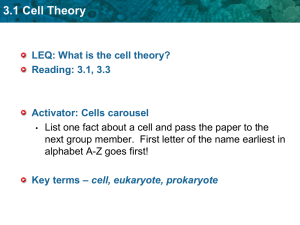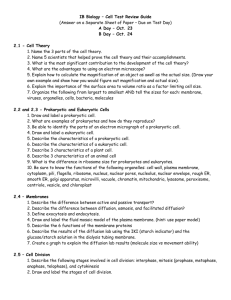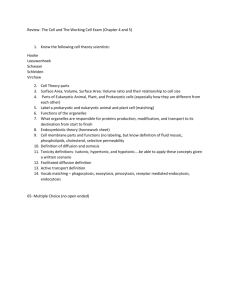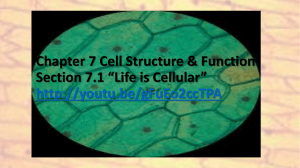Cell Theory
advertisement
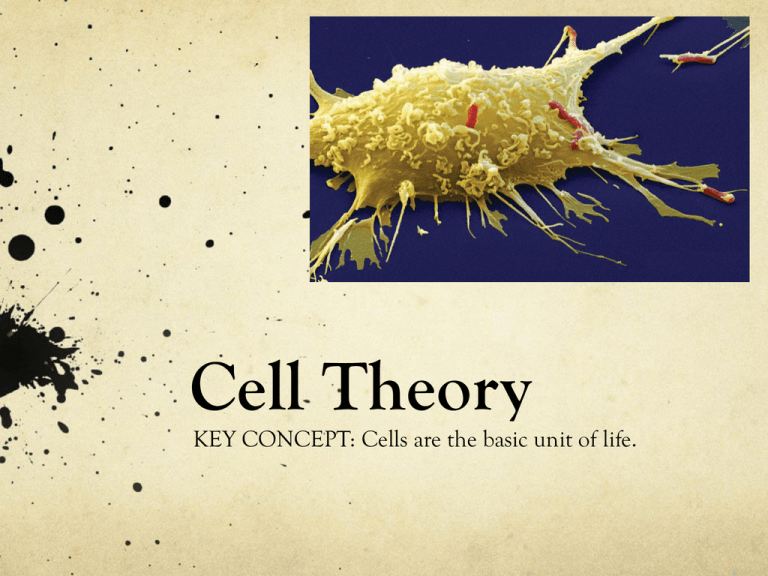
Cell Theory KEY CONCEPT: Cells are the basic unit of life. Many scientists contributed to the cell theory. – examined thin slices of cork; 1st to identify cells and name them “cells” •Leeuwenhoek – observed cells in greater detail by looking at pond water; saw first living cells “animalcules” •Schleiden – (compound microscope) – looked at plant tissue; plants made of cells •Schwann – (compound microscope)- looked at animal cells; concluded all living things made of cells •Virchow – proposed all cells come from other cells •Hooke The cell theory grew out of the work of many scientists and improvements in the microscope. Many scientists contributed to the cell theory. More was learned about cells as microscopes improved. The cell theory grew out of the work of many scientists and improvements in the microscope. Many scientists contributed to the cell theory. More was learned about cells as microscopes improved. The cell theory is a unifying concept of biology. • Important technological advances led to the cell theory Better lenses were crafted to solve problems like color distortion and poor image resolution. Microscopes became more sturdy and easier to handle. Photography & photomicrographs Stains – internal cell structures take up different dyes according to their composition. Mounting – use of cover glass and mounting media increased clarity. Lighting – the electric lamp revolutionized illumination giving a uniform field. Early studies led to the development of the cell theory. • The Cell theory has three principles. – All organisms are made of cells. Early studies led to the development of the cell theory. • The Cell theory has three principles. – All organisms are made of cells. – All existing cells are produced by other living cells. Early studies led to the development of the cell theory. The Cell theory has three principles. All organisms are made of cells. All existing cells are produced by other living cells. The cell is the most basic unit of life. There are two cell types: eukaryotic cells and prokaryotic cells. All cells share certain characteristics. There are two cell types: eukaryotic cells and prokaryotic cells. All cells share certain characteristics. Cells tend to be microscopic. Bacterium (colored SEM; magnification 8800x) There are two cell types: eukaryotic cells and prokaryotic cells. All cells share certain characteristics. Cells tend to be microscopic. All cells are enclosed cell membrane by a membrane. Bacterium (colored SEM; magnification 8800x) There are two cell types: eukaryotic cells and prokaryotic cells. All cells share certain characteristics. Cells tend to be microscopic. All cells are enclosed cell membrane by a membrane. All cells are filled with cytoplasm. cytoplasm Bacterium (colored SEM; magnification 8800x) There are two cell types: eukaryotic cells and prokaryotic cells. Eukaryotic cells have: A nucleus nucleus A cell membrane Cytoplasm Membrane-bound organelles organelles cell membrane There are two cell types: eukaryotic cells and prokaryotic cells. Prokaryotic cells: Do not have a nucleus. nucleus Have cytoplasm. Do not have membrane-bound organelles. Are microscopic single-celled organisms. organelles cell membrane


